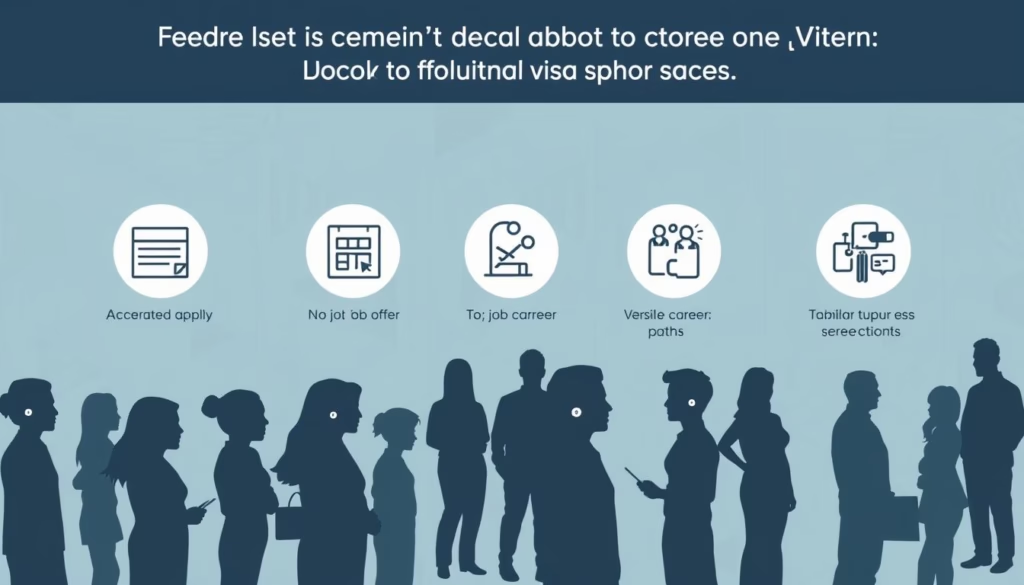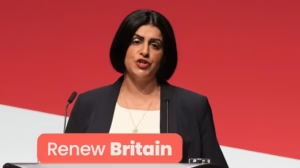Did you know the UK approved over 3,000 Global Talent visas in its first year alone? This path isn’t just for Nobel Prize winners—it’s designed for innovators at any career stage in tech, arts, or academia. Let me break down why this option could be your golden ticket to working in the UK.
Here’s what makes it unique: Unlike standard work permits, this route doesn’t demand a job offer or employer backing. You’re free to freelance, launch a startup, or switch roles without paperwork hassles. Even better—there’s no salary minimum or English test required initially.
Since replacing the old Tier 1 visa in 2020, the program has become a magnet for creators and researchers. Think of it like a backstage pass to the UK’s innovation scene. But here’s the catch—approval hinges on proving your exceptional promise or achievements in your field.
Key Takeaways
- No employer sponsorship or job offer required
- Work flexibility across roles, companies, or self-employment
- Fast-tracked permanent residency eligibility
- Open to emerging leaders and established experts
- Application focuses on achievements, not salary history
Overview of the Global Talent Visa
Imagine holding a visa that adapts to your career moves instead of restricting them. This route isn’t just about entry—it’s about building a life. Think of it as a career Swiss Army knife, designed for those shaping industries through innovation.

Purpose and Benefits
The program cuts through red tape like a hot knife. Unlike standard work permits, it focuses on your impact rather than employer needs. You’re not just filling a job—you’re recognized as someone who’ll elevate the UK’s tech, arts, or academic sectors.
Approved applicants unlock immediate perks:
- Work for any company or yourself
- Bring family members without extra financial checks
- Skip minimum salary requirements
Flexibility and Long-Term Residency Options
Here’s the kicker: Your residency clock ticks faster. Prove exceptional talent, and you could apply for permanent status in three years. Emerging leaders under exceptional promise get there in five—still quicker than most routes.
Career pivots? No problem. Transition from employee to founder without notifying immigration officials. One designer I know used this freedom to launch three startups while mentoring at universities. That’s the kind of fluidity this path enables.
Who Qualifies: Eligibility and Qualifying Fields
Let’s cut through the jargon. Qualification hinges on two elements: your professional standing and your industry. You don’t need a Nobel Prize – just proof you’re shaping your domain through action or potential.
Demonstrating Leadership or Exceptional Promise
Here’s the truth: “Leader” doesn’t mean CEO. I’ve seen approvals for:
- A bioethicist influencing policy through published research
- An open-source developer whose tools became industry standards
- A ceramic artist featured in three national museum collections
The magic lies in showing measurable impact. For established pros, highlight awards or patents. Emerging talents? Focus on rapid career growth or peer recognition.
Fields: Science, Digital Technology, Arts & Culture
The program casts a wide net across innovation sectors. Check where you fit:
| Field | Examples | Key Evidence |
|---|---|---|
| Science & Medicine | Researchers, clinical trial leads | Published studies, grant awards |
| Digital Tech | AI engineers, cybersecurity experts | Product launches, technical patents |
| Arts & Culture | Curators, animation directors | Exhibition records, critical reviews |
One filmmaker client secured approval with festival selections and a BAFTA nomination letter. Your proof points just need to show consistent engagement at respected platforms in your field.
Navigating the Endorsement Process
Picture your career as a rocket – the endorsement stage is the launchpad. This separate evaluation by UK-approved experts determines whether your trajectory aligns with their innovation goals. Unlike standard visa checks, they’re assessing your potential to reshape industries.
Understanding Endorsement Requirements
Your endorsement application needs to convince specialists at an endorsing body like Tech Nation or Arts Council England. I’ve seen successful cases include:
- Patent filings with real-world implementations
- Exhibition catalogs from recognized galleries
- Letters from industry leaders quantifying your impact
Exceptional Talent versus Exceptional Promise
This distinction shapes your UK journey. Established innovators prove leadership through:
| Criteria | Exceptional Talent | Exceptional Promise |
|---|---|---|
| Career Stage | Proven leader | Rising star |
| Evidence Needed | Awards, patents, media features | Academic excellence, project leadership |
| Residency Path | 3 years to permanent status | 5 years to permanent status |
Here’s the insider tip: Apply under talent endorsement first. Review panels often downgrade applications but never upgrade them. One AI researcher I advised secured approval by submitting peer citations alongside prototype code – concrete proof beats vague promises every time.
Global Talent Visa – Everything you need to know
Think you need a Nobel Prize to qualify? Let me reset expectations. This route rewards strategic storytelling about your career more than trophy-case achievements. Whether through endorsement letters or international awards, your goal is proving how your work benefits the UK’s innovation ecosystem.
Here’s the roadmap: Start by choosing between two entry points:
- Prestigious prize winners (like Turing Award recipients)
- Endorsement applicants demonstrating exceptional impact
I’ve seen tech founders secure approval with prototype traction instead of revenue. Artists qualify through gallery partnerships rather than solo exhibitions. The secret? Frame your accomplishments as springboards for future UK contributions.
Approval rates jump when applicants connect their expertise to national priorities. A climate scientist might highlight Britain’s net-zero goals. A game developer could align with the UK’s £7 billion gaming industry. This isn’t flattery—it’s demonstrating cultural awareness.
Unlike standard work permits, this program skips salary checks and language tests initially. You’re trading bureaucratic hoops for a different challenge: making reviewers believe in your potential as much as you do. One client landed approval by submitting patent filings alongside letters from industry leaders—concrete proof beats vague promises every time.
Pathways via Prestigious Prizes
What if I told you some awards function like a golden ticket for UK immigration? Certain high-profile honors let you bypass the usual endorsement maze entirely. This isn’t about celebrity status—it’s about leveraging verified excellence in your field.
Criteria and Recognition
Here’s how it works: If your name appears on specific international or national awards lists, you qualify for direct entry. Think Oscars for filmmakers or Turing Awards for computer scientists. But lesser-known industry-specific accolades also count if they’re in the UK’s official Appendix.
The rules are refreshingly simple:
- Your award must be active (not revoked)
- You’re personally named in the citation
- It appears on the current approved list during application
I once worked with a cybersecurity researcher who’d won a niche innovation prize a decade prior. We checked the latest Appendix—it was still listed. Her application sailed through in weeks instead of months.
Watch out for institutional awards though. That Nobel your lab shared? Only counts if the certificate specifically mentions you. Team achievements don’t transfer unless your individual contribution is documented.
Pro tip: Bookmark the Immigration Rules Appendix page. The UK updates eligible awards annually. Finding your honor there? You’ve just unlocked the express lane.
Understanding Endorsing Bodies and Their Criteria
Let’s talk about the gatekeepers of innovation visas. Your application lives or dies by their judgment—not bureaucrats, but industry experts who eat, sleep, and breathe your field. These endorsing bodies aren’t checking boxes; they’re evaluating whether you’ll push British innovation forward.
Role of the Royal Society, Tech Nation, and Arts Council England
Each body operates like a specialized filter. The Royal Society wants to see how your research moves needles in science—think published breakthroughs or patented discoveries. Tech Nation? They’re hunting for market-ready solutions in digital technology, whether you’re coding AI tools or scaling startups.
Arts Council England values cultural impact differently. A theater director I advised won approval with sold-out runs and critical essays about their work. What matters is showing sustained engagement with respected platforms in your field.
Tailoring Your Evidence
Here’s the insider playbook:
- Scientists: Highlight peer reviews and grant leadership
- Tech innovators: Show product adoption or technical patents
- Artists: Curate exhibition records and media recognition
Since August 2025, all applications funnel through GOV.UK’s Stage 1 form—even for digital technology fields previously handled by Tech Nation. This streamlined process demands sharper evidence curation. One cybersecurity founder recently aced approval by submitting user growth metrics alongside letters from Fortune 500 clients.
Remember: These bodies speak different professional languages. Your job? Translate your achievements into their dialect of success.
Preparing a Standout Application
What separates approved applications from rejected ones? It’s not just credentials—it’s how you package your story. Think of your submission as a puzzle where every piece must interlock to show your professional journey’s trajectory.
Gathering Evidence and Recommendation Letters
Those three recommendation letters aren’t mere formalities. I’ve seen applications thrive when:
- A UK research institute details collaborative projects
- An international journal editor quantifies citation impact
- A Nobel laureate connects your work to industry advancements
Pro tip: Draft template letters for recommenders. Include bullet points about specific achievements they can personalize. It streamlines their process while ensuring key points get covered.
| Evidence Type | Examples | Key Proof Points |
|---|---|---|
| Media Recognition | Forbes feature, BBC interview | Circulation numbers, expert commentary |
| Professional Appearances | Keynote speeches, jury roles | Event prestige level, attendee metrics |
| Awards | Industry-specific prizes | Judging criteria, competitor pool size |
Organizing Your Supporting Documents
Ten pieces of evidence sound daunting until you categorize them. A recent client structured theirs like this:
“Group materials by impact type—innovation, recognition, and collaboration. This framework helped reviewers immediately grasp my career’s multidimensional growth.”
Avoid the rookie mistake of including outdated blog posts. Focus on materials with verifiable dates and third-party validation. Remember: Your youngest document must be under five years old, but your strongest piece could be from last month.
Step-by-Step Guide to the Visa Application Process
Ready to turn that endorsement into a UK visa? Let’s map this journey like a relay race—two critical stages where timing and precision determine success. Stage 1 gets the baton from your endorsing body, Stage 2 carries it across the finish line.
Online Application and Switching from Other Visas
The digital gateway opens whether you’re applying from Tokyo or Tottenham. I always remind clients: check your current visa type first. You can switch directly if you’re on:
- Innovator
- Skilled Worker
- Student
But hit pause if you hold Visitor, Graduate, or Seasonal Worker status—these require exiting the UK first. The online form takes 45 minutes if you’ve prepped your endorsement code and passport details.
Submission of Biometrics and Supporting Documents
Here’s your three-month countdown: Once endorsed, schedule biometrics fast. First-time applicants must apply from outside the UK—a rule that trips up many. Recent clients in New York used premium centers to slash processing to 15 days.
Pack your submission like a parachute:
- Endorsement letter (digital copy works)
- Passport with blank pages
- Proof of address if switching visas
Miss the deadline? Your Stage 1 approval expires. But nail this, and you’re cleared for takeoff—no language tests or salary thresholds blocking your path.




